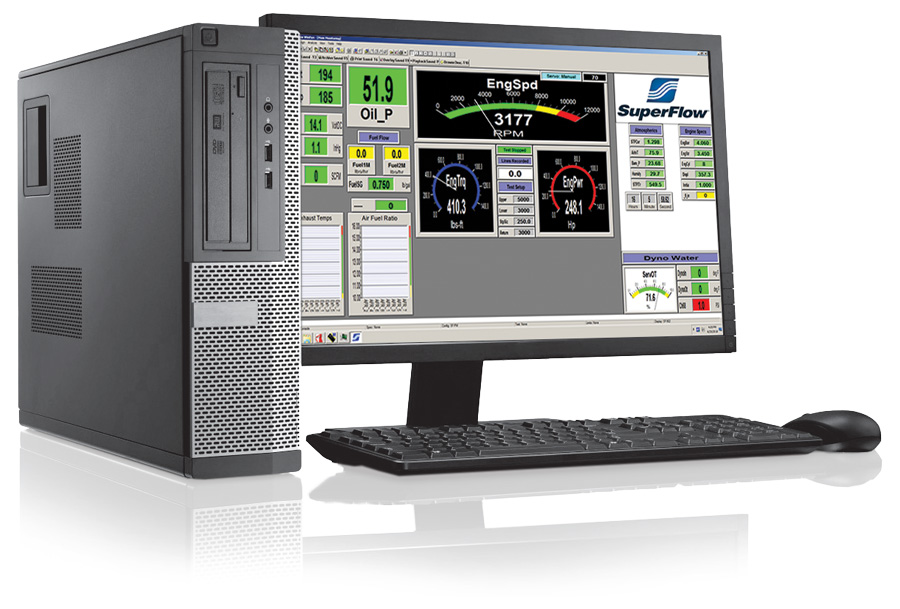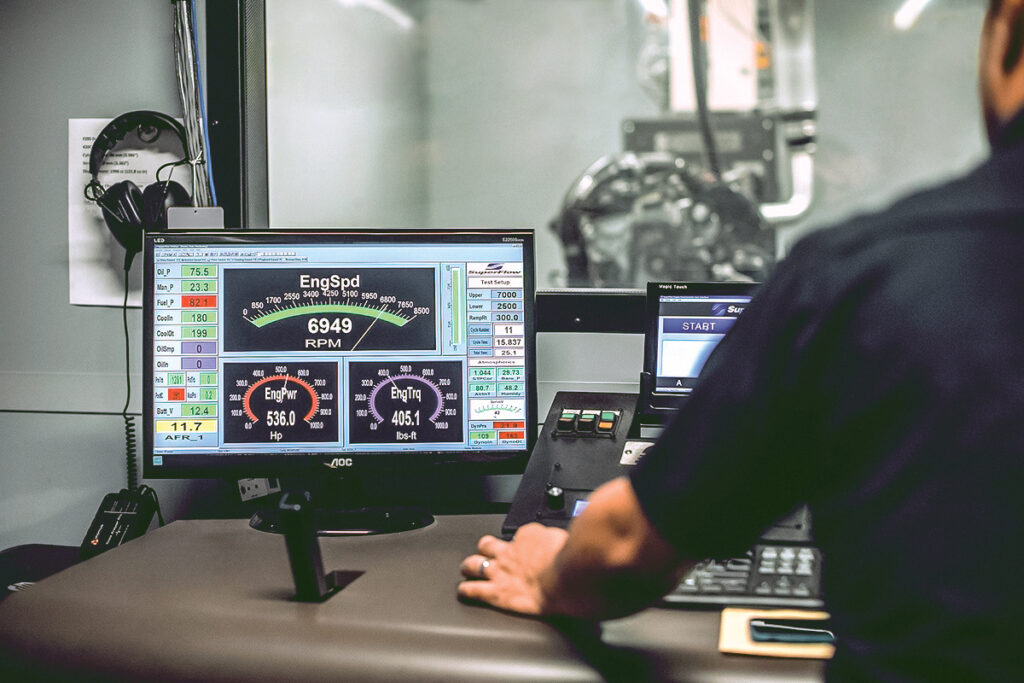Engine Testing Errors
July 21, 2023
Overview
Automated testing provides many testing possibilities, however certain test procedures can affect the test results. This is particularly true for dynamic tests which may need different interpretation than static tests. This article discusses several factors affecting the test and its results.

Test Procedure and Conditions
When programming a test, you can select or enter any test command and control value available. The test program has no way of verifying the validity of the test sequence and commands.
Ultimately, the constraints of the test are the (a) engine operating limits of the engine, (b) test system operating limits and (c) test system resolution. Be aware of those limitations when programming an automated test. For instance, do not:
- Force a heavy Diesel engine to accelerate at 2000 rpm/sec (engine limitation)
- Force a high-speed hydraulic dynamometer to hold full load at 500 rpm (test system limitation)
- Program throttle control set point changes to 0.1% accuracy (control resolution limitation)
- Trigger actions based on a 0.1-degree change in a thermocouple temperature (measurement resolution limitation)
Often, such test programming errors will not result in a clear, visible error condition during the
test; however, they will have a significant impact on the accuracy and test repeatability.
Measurement Delays
Be aware of the delays required to perform accurate measurements. When an internal combustion engine is operated in a transient mode, many of the variables measured by the test system change continuously. The test system will only record valid information if the operator is aware of the following delays when programming a test.
Response Time
The engine has a response time to command inputs (delay between receiving the new set point command and actually reaching it); all sensors must have a response time (the delay between a change in the actual value and a corresponding change in the sensor output). If the test program does not take these response times into consideration before moving on to the next set point or before recording a measurement, significant errors can result.
For more information on the response times of sensors used in your test system, refer to the sensor data sheets available from SuperFlow Sales or Customer Service.
Settling Time
Both the engine and the sensors may have a period of instability after the initial step response time before reaching a stable operating mode or output. The test program should consider this.
Transfer Time
In addition to response and settling times, a delay for the measured variable to reach the measuring instrument (sensor) may occur. A typical example is the delay in exhaust emission measurement because of the time required for the exhaust sample to travel down the sampling tube into the instrument. This delay is called transfer time. Transfer time is also apparent in pressure measurements, when the sensor is at the end of a long pressure line and in fuel measurements when the fuel system is connected to the engine with a length of pipe. Again, the test program should consider the transfer time. When transfer times are known, it is sometimes possible to correct for them.
To eliminate errors caused by these delays as much as possible, only make measurements after sufficient stabilization time. The greater the step changes, the longer the stabilization time should be. Most tests are programmed for an acceptable compromise between total test duration and minimum stabilization time.
When transient tests are performed (such as acceleration tests), it is not possible to stabilize the engine at each operating point. This results in a phase shift between the actual engine data and the measured values. The operator should be aware of this when interpreting test results. To minimize phase shift, use sensors with low response times, and keep transfer times short by mounting the sensors on the engine or as close as possible.

System Inertia in Transient Tests
Of particular interest during transient tests is the mechanical inertia of the engine (drivetrain) and of the test system itself. When an engine (vehicle) is accelerating, the net power produced by the engine is partly used to overcome the inertia of the engine and of the test system (absorber, dynamometer rolls); the remaining power (at the flywheel or at the wheels) is “measured power.”
The faster the transient, the more power is needed to overcome system inertia and the less power is available as flywheel power.
When comparing step tests with acceleration tests, this phenomenon is visible as a drop in measured power during the acceleration test. The drop is greater for faster acceleration rates. If the inertia of the engine (drivetrain) is known, it is possible to correct for this phenomenon by calculating inertia power (as a product of system inertia and acceleration rate). Adding this inertia power back into the measured power should approximate the total power as measured in steady state conditions.
Test Cell Air Quality
An often-overlooked factor in dynamometer testing is controlling the quality of the air in the dynamometer cell. SuperFlow recommends exchanging the air within the test cell approximately 8–10 times per minute when the engine is running. The dynamometer cell airflow should flow across the engine and then out of the cell without recirculation. It should never flow across the exhaust system prior to reaching the engine air inlet because any leaks will cause the engine to ingest carbon monoxide. Exhaust fumes quickly kill engine power in an erratic fashion.
One good test in the dynamometer cell is to smell the air in the vicinity of the engine air intake. If you can smell exhaust gas; your exhaust system is leaking and the cell airflow is poor. You will have difficulty producing good results until you fix both problems. It is not unusual for power to be affected as much as 5% by a single exhaust gas leak in a cell with a recirculating air pattern.
You can investigate the airflow pattern in the cell by taping pieces of tissue paper to various walls and parts within the cell, then watching the direction of airflow. If you see return swirls and the air is circulating around the exhaust system and back to the engine air intake, try changing the airflow pattern in your cell with deflectors on the air inlets, etc.
Another commonly used option is to duct in the intake system air from a controlled environment outside the test cell. This is a good method to improve test repeatability. It eliminates any contamination to the intake air from within the cell and tends to normalize the year-round air conditions (temperature and humidity). However, pay attention to where you duct in the air supply. Do not place the air duct over any source where the air may be contaminated from cleaning activities or other activities that may spread fumes into the air supply.
Dynamic Carburetion Effects
The power produced by the engine will change somewhat in transient modes, mostly from dynamic effects in the air/fuel supply. The response of the fuel supply to changing engine speed and load conditions is different than the response of the air supply. The resulting change in air/fuel ratio during transients will have an impact on the power output. The test system cannot compensate for this: it is not a measurement error but an actual change in the engine operating parameters. Note that temperature changes in the intake and exhaust system and local engine oil and coolant temperature changes during transients also have an effect on power output. This effect is usually much smaller than the effect caused by the air/fuel ratio.
